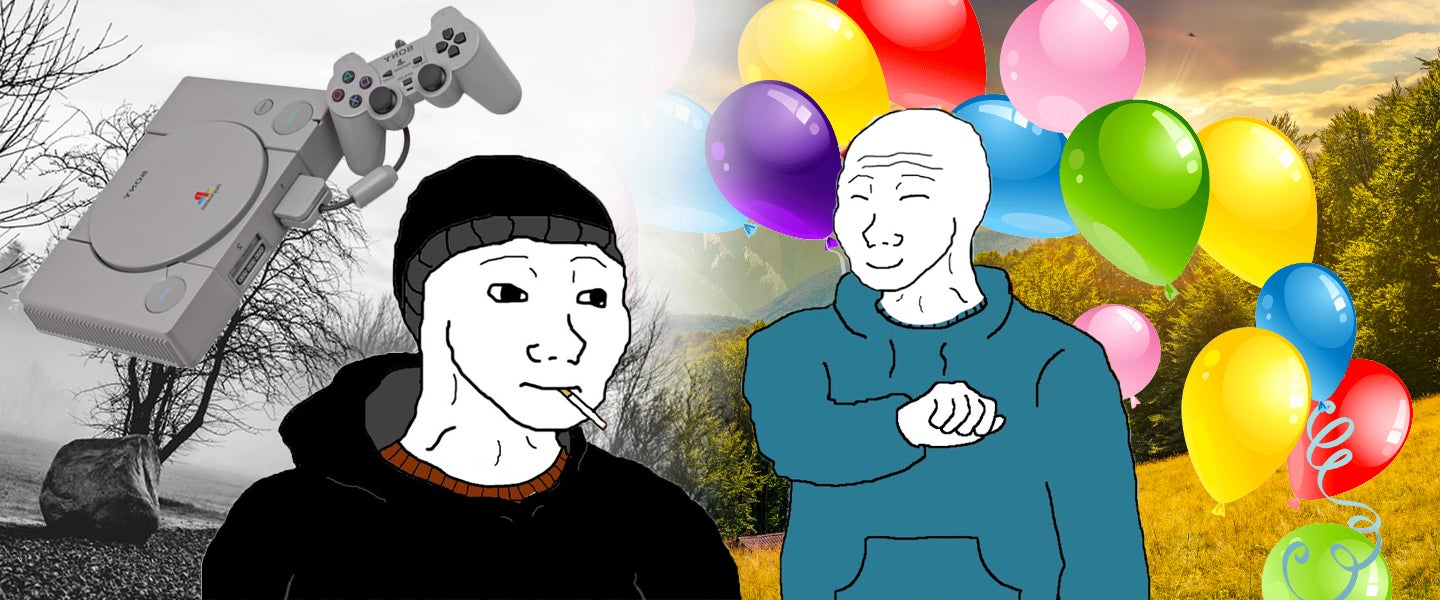If you want to understand the shadow that the Baby Boomer generation has cast over everyone born after 1964, look no further than 4chan. For the last year or so, the imageboard’s anonymous users have concocted an array of generational archetypes that play rhymingly on the “boomer” tag — now widely applied across the mainstream internet to mock out-of-touch, politically regressive, web-illiterate old folks (or younger people with that same energy). These new labels, including “doomer,” “gloomer,” “zoomer” and “bloomer,” are meant to capture a spectrum of mindsets and corresponding life paths that the channers use as a map to the future of society.
Spoiler alert: They aren’t optimistic.
Any rundown of these figures — which remain the subject of some debate, and in the nature of memes, have quickly spiraled out of coherence — must begin with the concept of inherited Boomerism. As dedicated students and curators of the Boomer ethos will tell you, one needn’t literally belong to the Baby Boomers to share in their delusions. An older millennial, for example, may be perfectly imitating their parents’ progress through the expected stages of career, marriage and family, and hold trust in A) the unstoppable betterment of humanity; B) the ability of government to likewise improve or amend its flaws; C) order, justice and prosperity under capitalism; and D) survival of the world’s existing power structures in the face of climate change, etc.
And so 4chan came up with “that 30-year-old boomer,” a guy whose life isn’t all that great, but who fundamentally cannot realize this. He’s too busy trading crypto, chugging Monster Energy Drink, riding around on his lawnmower, listening to 1980s metal bands and enjoying outdated video games. It’s a semi-accidental update of Berkeley activist Jack Weinberg’s immortal advice to never trust anyone over 30, as they’re already compromised by — if not fully complicit in — a system that younger people are busy critiquing. This character is a dinosaur before his time, and while he’s often portrayed as blissfully ignorant of his meager status, he’s also made out to be the last beneficiary of a bygone prosperity. There are allusions to his mortgage, kids and steady job. Sometimes he takes the form of an aged-up “Chad,” successful despite peaking in high school.
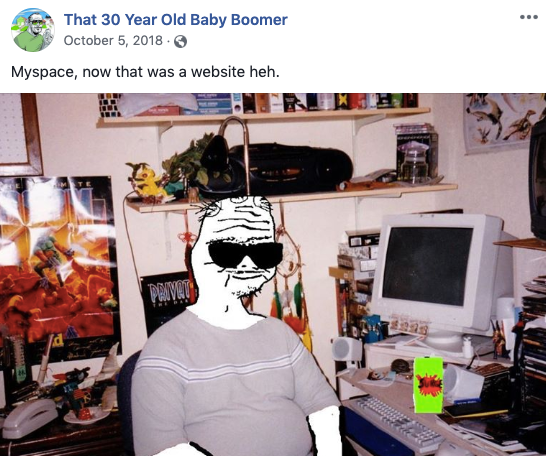
Much younger than the terminally nostalgic, financially secure 30-year-old Boomer is the zoomer, a Gen-Z stereotype with an undercut, round-lens glasses, a thirst for coconut water and a devotion to Fortnite. (Yes, 4chan tends to sort identity by preferred beverage and video games.) The zoomer also has web-inflected taste: He likes the rapper Tekashi 6ix9ine and, unlike the premature Boomers, is fluent in the language of memes. Other than these handful of signifiers, though, the zoomer doesn’t have much of a persona; you get the sense, however, that he’s bullied, mocked and antagonized by the Boomers. One YouTube video, for example, has a Boomer put a zoomer in a headlock at the gym.

Then there are three categories of dudes — it’s pretty much always dudes, of course — to cover one’s 20s: the bloomer, the gloomer and the doomer.
The bloomer has a positive outlook, resists self-destructive behavior and generally functions as a happy contrast to the other two. Gloomers are perhaps the least well-defined of the bunch, but you can think of them as a nascent or slightly artsier version of the doomer, who has largely opted out of the relationships or passions that might make existence feel worthwhile. Instead, when not suffering in the yoke of his menial, minimum-wage job, he medicates with booze and cigarettes, revisits happy memories in a painful light and adopts a more or less nocturnal schedule. He does not hope (or strive) for more. According to the dozens of “Gloomer” and “Doomer” playlists on Spotify, he listens to music like the Cure, Joy Division, Radiohead and My Bloody Valentine.
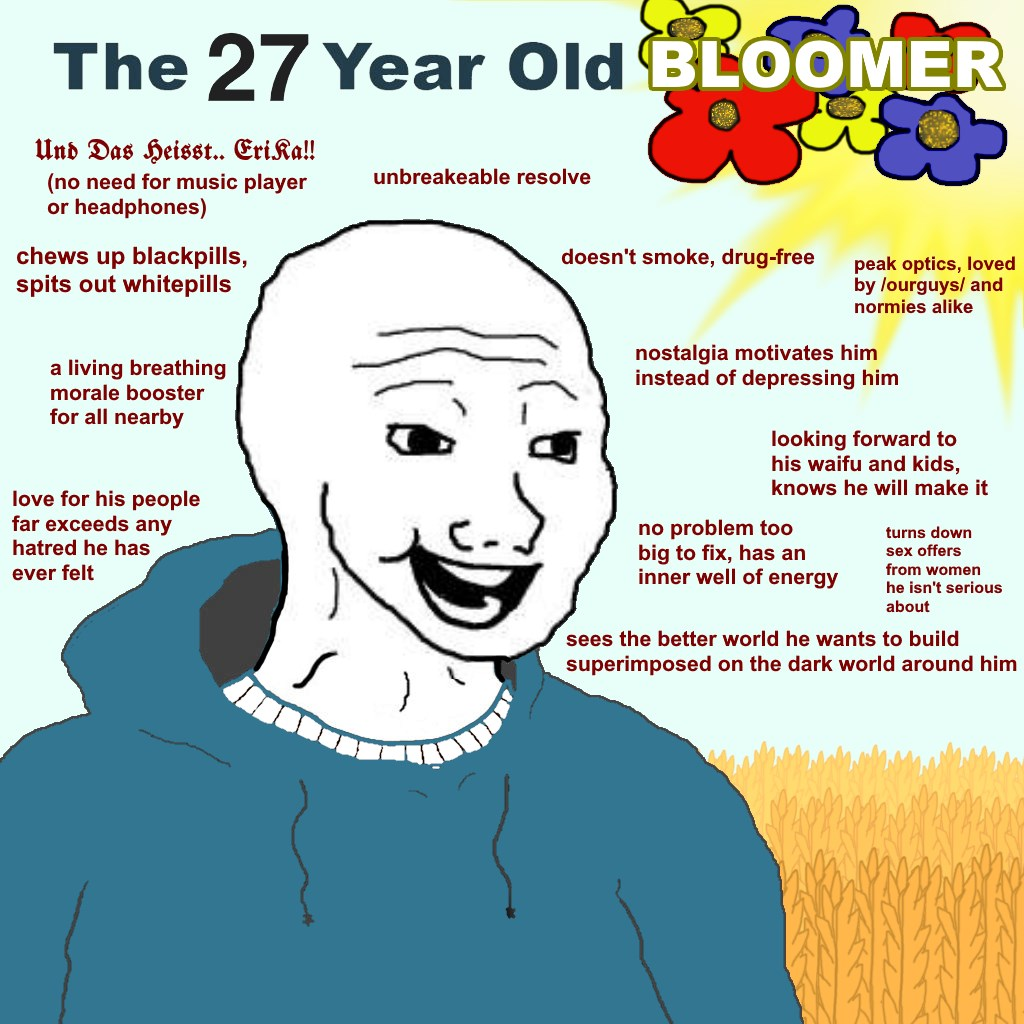

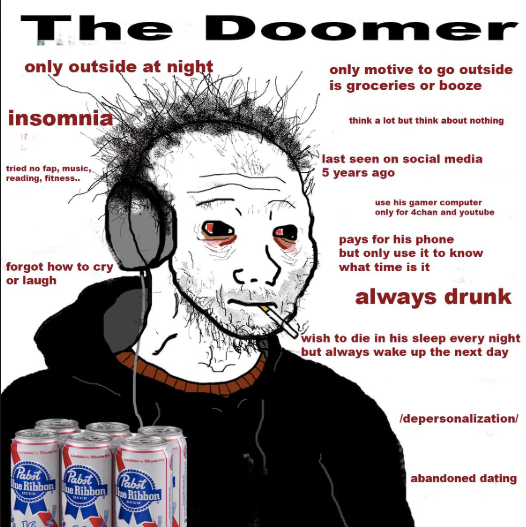
With these different strains established, channers next developed highly esoteric remixes and what you might call “prequels.” You have memes about doomers from other historical eras — the early 1900s, the 1800s, even the middle ages. It’s possible, apparently, to convert from 30-year-old Boomer to 30-year-old doomer, and shitposters have tried to arrange all the “oomers” in alignment charts according to ideology (never to any legible effect, though that probably isn’t the point). Besides, only the doomers have any relevance, because they are the type that the 4chan depressives identify with.
The others are not derived from actual, observable human personalities; they are pure caricature, fantasies that the doomer has of lives more endurable than his own. They may as well be “NPCs,” or non-player characters — the gamer slur that channers deploy to dehumanize “normies” as blank husks “who have no internality whatsoever.”
The doomer, meanwhile, wallows in his self-pitying nihilism, which is justified with dour philosophy 101 quotes from the likes of Nietzsche and Schopenhauer. It’s a form of navel-gazing that at once blames misery on overwhelming external circumstance and personal failure or abdication of responsibility for oneself. Tellingly, there are strong links to the so-called “black pill” stance, where an effort to escape the death spiral is seen as pointless, given a universe stacked against the declared victim. The toxicity of these online communities, of course, never counts as a factor in the doomer’s mental state, and yet the doomer memes themselves — amid the pop-cultural and drug references — here and there inject bits of far-right extremism: anti-semitic tropes, fear at the incipient collapse of “the West,” hand-wringing over birth rates, interest in domestic terrorism.
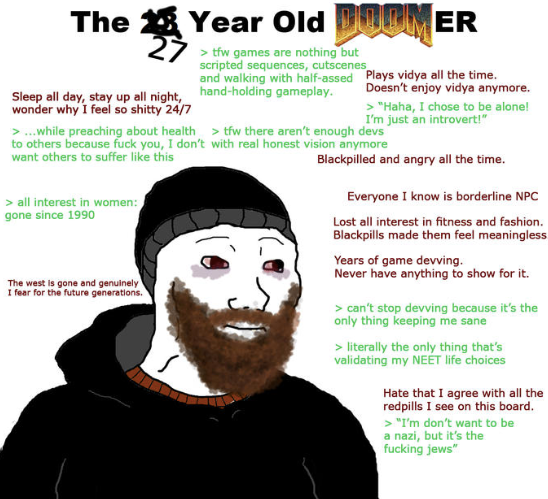
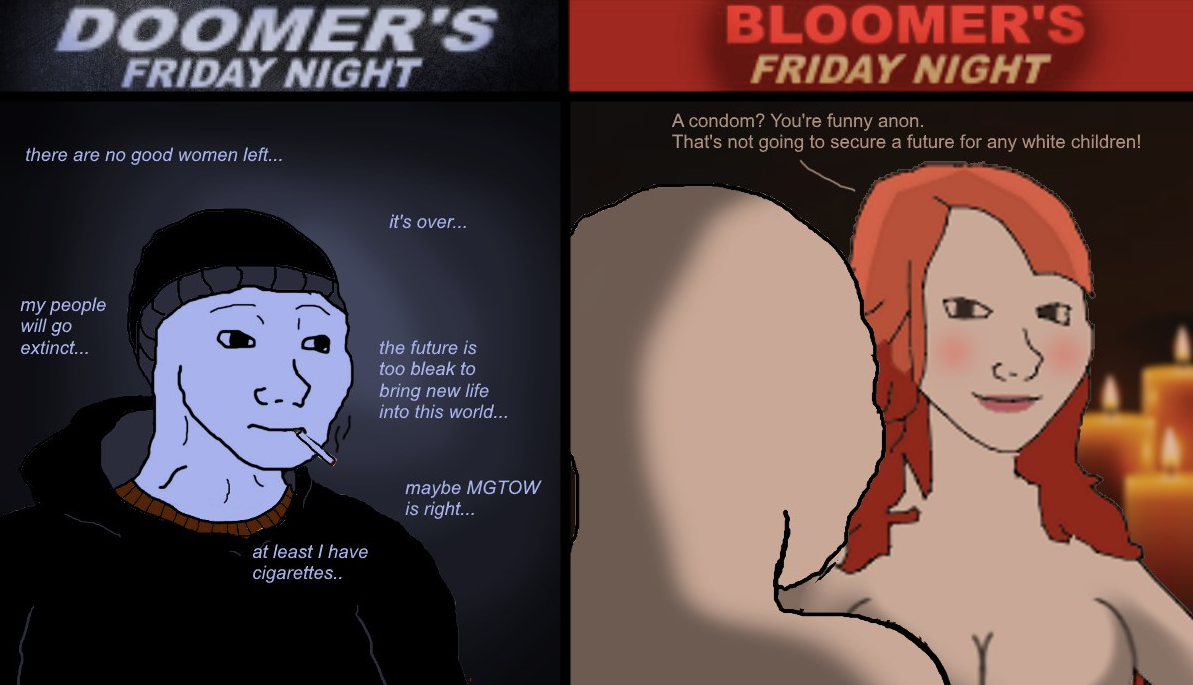
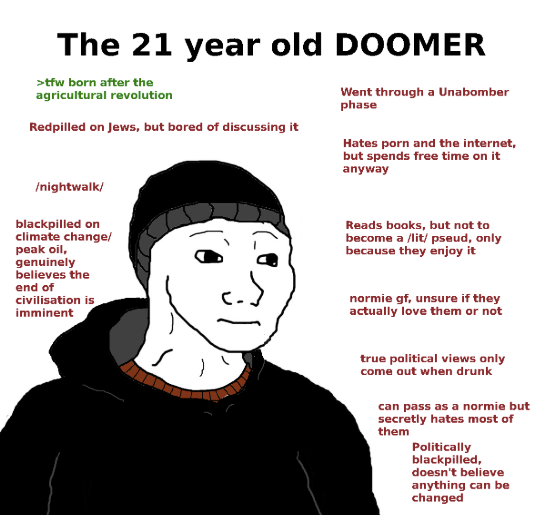
This is the very stew of ingredients that currently fuels a global network of violent white supremacy. That it’s couched in “irony” makes it no less dangerous, as I wrote when the New Zealand mosque shooter’s manifesto turned out to be crammed with these “jokes,” culled from the same subculture that produces doomer content. Combined with total despair — the defining trait of the doomer is the belief that change isn’t possible, and therefore nothing matters — this percolating meta-hatred poses a question: Why not go out there and kill people? In fact, isn’t this the only way to break the cycle of monotony?
The constant return to “humor” as a front for bigotry is exemplified in the far right’s recent adoption of “Honkler” — Pepe the Frog in a clown outfit — as a new mascot for their hate. The idea, as usual, is to link the race-baiting to an otherwise innocuous symbol, so that when they’re accused of spreading vile propaganda that invites potentially fatal consequence, they can pretend we’re overreacting to the silly cartoon. Several months old at this point, the doomer has probably run his course as a Trojan horse meme. Perhaps a few sad, angry men related to the first doomer animation above, created by a guy known as “Prince of Zimbabwe,” and subscribed to his channel, then watched his next video — a seemingly wholesome but obviously mocking piece about a doomer magically transforming into a bloomer — and then his latest offering, wherein Honkler menaces and presumably kills a doomer. Underneath the video, commenters are giddy at the prospect that it might anger the NPCs. One wrote: “We must secure an existence for the clowns and a future for our honks. Heil Honkler.”
Am I triggered? Scared? Eh, I’m kind of too tired to care. Edgelords will keep dropping Nazi references wherever they can get away with it, and eventually the one guy in a thousand who takes this all seriously will buy an AR-15 and start spraying bullets. I wouldn’t be shocked if the next mass shooter currently identifies as a doomer — that this is the lens he uses to aestheticize and intellectualize his rage, his desire to take human life — but I have no way to unring that bell. Guess I’m a bit of a doomer myself.
